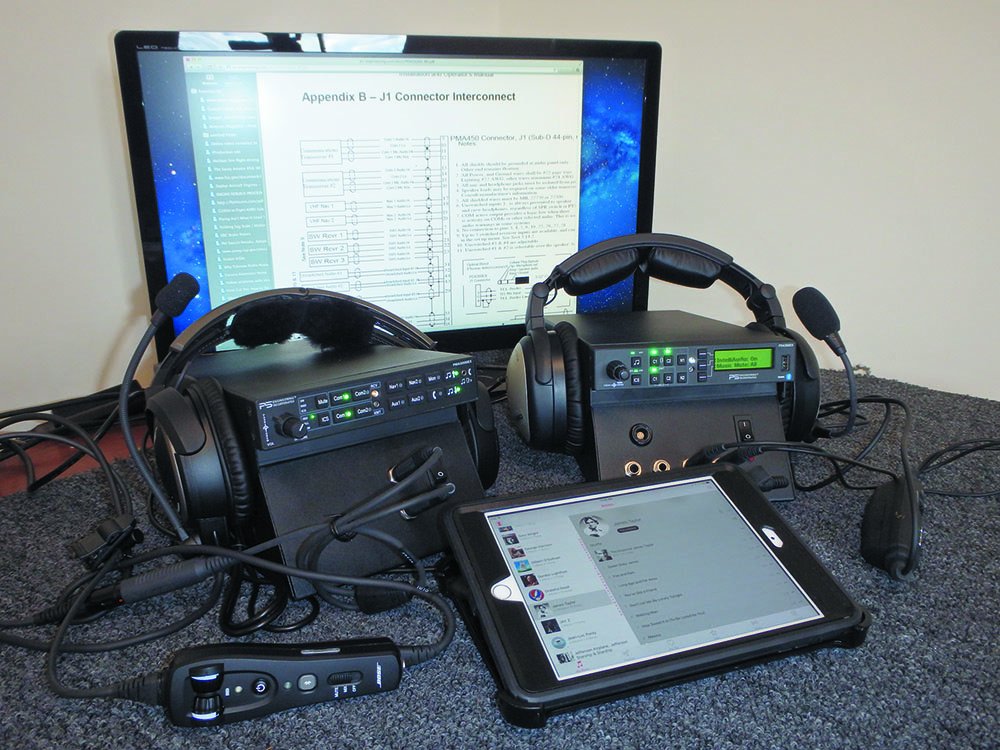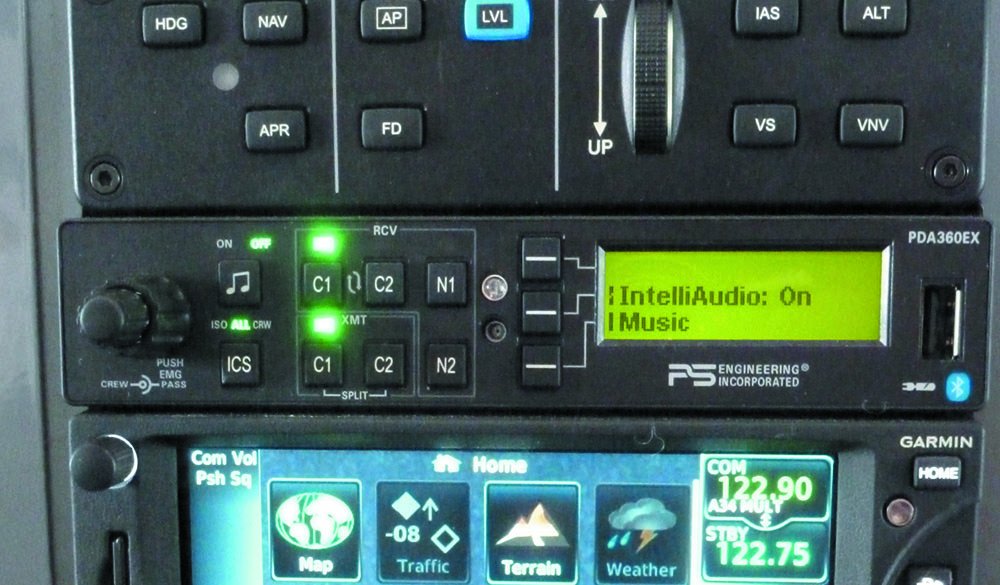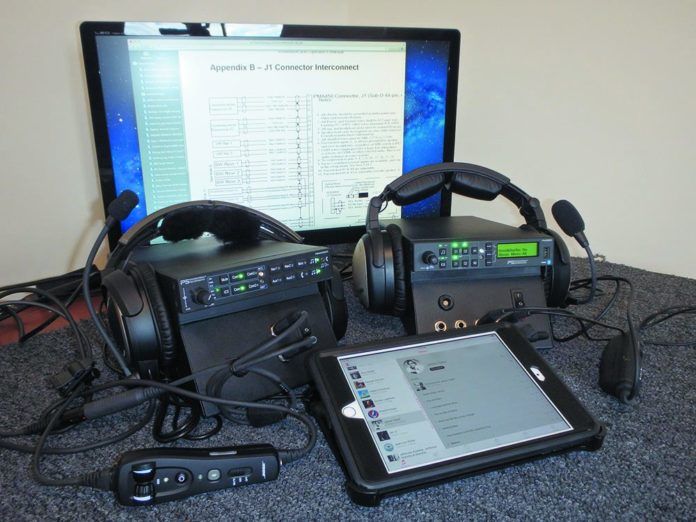Whether you’re building a new kit or expanding the panel of a legacy or newer LSA, the current audio panel market is confusing. For VFR missions in a two-seat LSA, you don’t need some of the advanced features that tag along with TSO’d systems, including marker beacon receiver, six-seat intercom, cabin PA and even speaker operation. But you probably want Bluetooth music capability and a wireless telephone interface, plus the ability to pipe in traffic and other warning systems.
PS Engineering and Garmin have versions of their flagship and certified (read higher cost) audio products, but are trimmed and enhanced for LSA and kit applications. To see how they compare, we put them on our test bench for a critical evaluation of audio quality and feature set. Herewith are the results.
| NON-CERTIFIED AUDIO PANELS COMPARED | ||||
|---|---|---|---|---|
| MODEL | PRICE | BLUETOOTH | INTERCOM STATIONS | COMMENTS |
| Garmin GMA240 | $850 | No | two, dual music input | We wish it had Bluetooth, but like its no-frills price point and simple conotrol set. |
| PS Engineering PMA5000EX | $1095 | No | four, dual music input | Every audio panel should have music volume controls on the bezel. This one does. |
| PS Engineering PDA360EX | $1995 | Yes | four, dual music input | Easy plug-and-play with Garmin GMA340/240, advanced feature set. |
PS Engineering
The two non-certified audio panels in PS Engineering’s lineup—PDA360EX and PMA5000EX—trickle down from the company’s certified systems, notably the PMA450 and PM8000-series. Without the high cost of FAA certification (which of course is passed along in certified products), the EX-series have many of same features of PS Engineering’s flagship panels, but with additional capabilities that cater to the LSA applications.

First, the $1995 PDA360EX, a descendent of the company’s flagship PMA450, which is equipped with PS Engineering’s IntelliAudio technology. Measuring 1.30 by 6.25 by 7.15 inches and weighing 1.5 pounds, the PDA360EX is plug-and-play with Garmin’s GMA240 LSA/experimental audio panel. Other than price, it’s worth noting that the PDA360EX differs slightly from the PMA450 in that it has a four-seat intercom (instead of six in the PMA450), it doesn’t have marker beacon functions, it can’t support a cabin speaker and it has no public addressing capability. But it does have advanced audio processing through IntelliAudio.
Licensed from the U.S. Air Force, IntelliAudio helps present the audio sources in a way that’s more intuitive to process, or at least in a way that mimics how the human ear hears and registers sound (similar to what Garmin does with its 3D Audio function). Air Force pilots know this technology as Multi-talker.
IntelliAudio places Comm 1 and Comm 2 audio in various positions within the stereo headset, making simultaneous incoming radio signals sound as if they are coming from different locations. For example, the user can place the signal sources in nine unique positions. The intent is to make it easier for the pilot to concentrate on the radio of choice while ignoring the radio of lesser importance at the time. For example, the pilot can choose to pay attention to ATC while ignoring an ATIS broadcast, depending upon what is pertinent at the moment.
PS Engineering attempts to simplify the user interface with an LCD bezel display, while retaining traditional push buttons and a rotary volume knob for radio switching and basic intercom settings. The display is especially useful for configuring the IntelliAudio dimensional sound through the Head Related Transfer (HRT) function. This is essentially a graphic showing where the sound is positioned relative to your head. You can turn the IntelliAudio off and listen to the audio in a traditional manner through the IntelliAudio soft key on the display. The setup is refreshingly intuitive, in our opinion.
Once in the IntelliAudio mode, repeated pressing of the Comm 1 or Comm 2 line select keys moves a corresponding half-circle cursor to the locations relative to the listener graphic that’s on the display. Press Done to exit and save the configuration, where it’s recalled at every system power up.
A comm radio monitoring mode takes the interface one step further by allowing the secondary radio audio to be muted by the primary radio (or the one being used for transmissions) when there’s activity. This essentially automates my cat-and-mouse process of cranking the volume down when listening to ATIS on the second radio whenever a call comes in on the primary.
PS Engineering has always taken entertainment and telephone input to a higher level and the PDA360EX is no exception with its integrated Bluetooth transceiver. The feature set includes an onscreen Bluetooth telephone control, plus a bezel-mounted USB port, which can be used for charging. It provides 5 VDC and 1.5 amps of current, which can effectively charge most smartphones and tablets. When the phone rings, an incoming call menu opens, showing caller ID. Simply answer the call by pressing the top line select soft key on the display.

As we expected, the entertainment input music quality is flawless, especially when listening through the new Bose A20 and AKG AV100 ANR headsets, but what’s missing is a music volume control on the bezel. To adjust entertainment volume, you need to access the command from the onscreen menu. Not a huge deal, but dedicated hard keys sure would be more convenient, just as it is on the PMA5000EX—a panel not equipped with Bluetooth. More on that system in a minute.
The music input function has three modes. In the All mode, music will mute with either intercom or when there is radio activity. In Karaoke mode, the music only mutes during outgoing radio transmissions and in Radio mode it will mute whenever the comm radio breaks squelch. A dedicated bezel-mounted music On/Off button is handy for quickly stifling the music.
The PDA360EX is equipped with an internal readback recorder, which captures up to 45 seconds of audio. Recording is automatic and both the pilot and copilot can hear the playback.
The PMA5000EX is much like the company’s certified PMA8000B audio panel. It’s a direct slide-in replacement for Garmin’s GMA240 and GMA340 audio panels and has a four-seat intercom, unlike the six-place capability in the PMA8000B. Also unlike the 8000B, the 5000EX doesn’t have marker beacons, cabin speaker output and it doesn’t have a digital readback recorder.
What we really like about the PMA5000EX is the ability to adjust music input volume from the front panel. Simple Up and Down volume keys serve as a master gain control, while the entertainment volume can be tweaked on the music device. The 5000EX incorporates the SoftMute function described above and can accommodate two music inputs, including the 2.5 mm bezel-mounted input jack. It can accommodate cell phone input, music input and an advisory audio input. You’ll need to purchase PS Engineering’s 2.55 mm adapter patch cable to connect these devices. There are a variety to choose from, based on the model of your phone.
While the 5000EX has four unswitched inputs, it also has two auxiliary switched inputs (these are controlled with dedicated bezel keys), which have a convenient muting function. Simply press and hold the key of the input source you want to mute for two seconds and it stifles the warning audio for 60 seconds and then returns to normal alerting mode. This might be useful for muting traffic alerts in high-density traffic areas and terrain warnings when flying low, for example.
At $1095, the PMA5000EX is $800 less than the certified PMA8000B, while the PDA360EX is $400 less than the certified PMA450. The EX-series comes with a one-year warranty, which is two years less than the warranty on certified panels. Additionally—and this is important—PS Engineering doesn’t offer a warranty on these products unless they are wired by an authorized PS Engineering dealer.
Garmin GMA240
Garmin’s non-certified stereo audio panel is the $850 GMA240, which borrows some function and ergonomics from the early-gen GMA340 and current GMA350-series.
If you’re looking for Bluetooth functionality you won’t find it on the GMA240. You’ll need to buy Garmin’s $2300 flagship and FAA-certified GMA350c. Read a review of it here. It has Garmin’s Telligence voice recognition system for commanding the panel with voice commands, but the function is missing in the GM240.

Measuring 1.30 by 6.29 by 7.12 inches and weighing 24 ounces including the mounting rack and connectors, the GMA240 sports a simple control set. The GMA240 accommodates two comm radios (and two nav receivers) and has a four-position intercom, which can also be wired for two seats in two-place cabins.
LED-illuminated push buttons (which have a positive, high-quality feel) control the main functions, while rotary knobs on the left and right side of the bezel control pilot, copilot and passenger volume and squelch threshold. The pilot’s rotary knob serves double duty as a power control, or the unit can be switched on and off with an avionics master switch. In the event of an electrical system failure, a fail-safe circuit connects the pilot’s headset and microphone directly to the primary comm radio, while an audio warning advises that power is interrupted or that the unit was powered off.
Garmin has a function called Master Avionics Squelch, or MASQ, which is internal processing circuitry, helping to reduce ambient noise inherent with the VHF radio inputs. MASQ isn’t a substitute for the panels’ adjustable squelch control, but instead is always working in the background to reduce noise. As expected, each microphone on the intercom has a dedicated VOX (voice activation) circuit to ensure only the active microphone is heard with an open squelch. Also as you would expect from a modern panel, the intercom provides two modes of isolation, Pilot (for privacy) and All (where everyone is on the intercom), controlled by pressing the Pilot ISO Key.
But there isn’t a standard crew isolation mode to separate the back seats from the front (an issue which doesn’t apply to two-seat LSAs, of course) unless it’s configured with additional wiring. But in doing that, crew isolation also eliminates the pilot isolation function. Some other features, including gain levels are enabled with internal jumpers and potentiometers.
The GMA240 accommodates three unswitched audio inputs, which have configurable volume level. These can be used for traffic and terrain system, engine monitor, and landing gear advisory and other attention-getting audio alerts.
One feature we’re fond of is Monitor Mute. Controlled with a dedicated bezel key, it mutes the audio from a secondary receiver when the primary radio receives incoming audio. You might be listening to an ATIS broadcast on the secondary comm radio, but receive a radio call on the primary. Monitor Mute can work as a backstop for not missing calls.

The GMA240 provides for two wired stereo entertainment inputs—controlled with the Music1 and Music2 push-button switch. A music input jack is also located on the GMA240 front bezel. This jack can accept a music player input or compatible telephone sources, allowing you to have a phone conversation in full duplex. The system has a Master Music bezel key for selecting and deselecting music input, the ICS bezel key enables automatic music muting during intercom activity and a Radio bezel key, which mutes the music during radio reception.
We hope for a replacement panel with more of the features that are built into Garmin’s flagship GMA350c, including Bluetooth.
Top Pick
For us, the easy top pick in this roundup is PS Engineering’s PDA360EX. We like that the company included cutting edge features (including Dimensional Sound) found in its flagship certified product, while tailoring the feature set around the typical LSA mission, but you’ll pay. At $1995, it’s the most expensive. Garmin’s $850 GMA240 is a good value, but missing are some modern features we think buyers will want, including Bluetooth.
Last, if you plan to install these yourself, consider that PS Engineering will not validate the warranty unless the wiring harness was built by a PS Engineering dealer. It can also provide a custom harness, based on your specifications.


